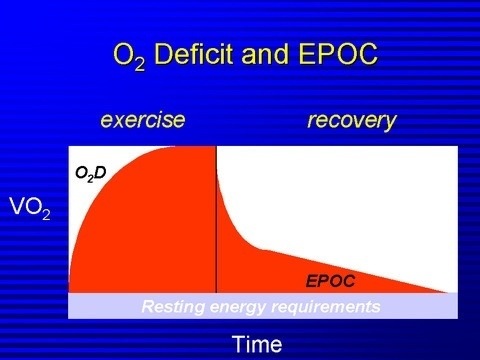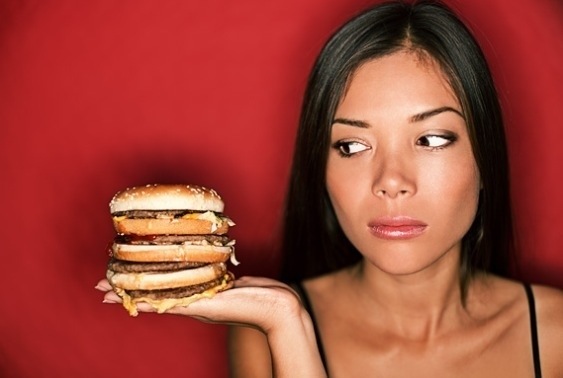
Do you know how many calories you burn during a workout? How about after your workout? After a tough workout instead of being tired have you ever felt totally energised? Maybe you are still sweating a little (or a lot) even after a shower. Why is this?
Some people call it the after-burn or a workout high. It’s actually called the Excess Post-Exercise Oxygen Consumption or EPOC. Technically EPOC is the increased oxygen consumed after strenuous exercise or activity to reduce the oxygen debt created by said exercise or activity resulting in caloric expenditure. In layman’s terms this means the additional calories you burn after exercise while your body is recovering back to it’s normal resting state.
Due to these extra calories being burned because of this “after-burn”, your EPOC can play a very significant role in weight loss.
When we exercise we are utilizing a massive amount more of oxygen than normal, our heart rate and body temperature can greatly increase, we are burning a lot more glycogen from both the muscle cells and blood stores, and we are producing more by-products. So after exercise we need to stock back up on the oxygen and glycogen we have used, reduce our body temp and heart rate, and deal with those by-products. All of this post-exercise work requires energy and this is where EPOC comes in.
The amount of calories burned post-exercise depends on the amount of oxygen consumed during EPOC and how long it lasts. The research is a little vague with studies showing it can last as long as 24 hours or as little as 90 minutes. The amount of post-exercise oxygen consumed can also vary greatly from person to person and is dependent on a number of factors including the person’s level of fitness and type of training. We do know that EPOC is present after both cardiovascular exercise and strength or resistance training. We also know that one factor that can have a big effect on EPOC is workout intensity. The amount of EPOC is directly related to the intensity of your workout. Both heavy strength training workouts and high intensity interval style training have been shown to have the greatest effect on EPOC.
Here are some tips to help maximize your EPOC:
Add Some Intervals – instead of just aimlessly plodding away on the treadmill watching some reality TV show, shake up your cardio by throwing in some high intensity intervals. Not only will they help you burn more calories while you are performing them, they can also crank up your EPOC levels, not to mention make running on a treadmill just a little less boring.
Lift Heavy – put down those pink neoprene hands weights and start lifting some real iron. Choose weights that make it difficult (but not impossible) to complete 8-10 reps. For the women who are afraid they will turn into a female Arnold Schwarzenegger overnight, don’t worry you won’t. For the guys who wish they could turn into Arnold overnight, sorry it isn’t that easy. Some studies have shown that heavy resistance training can have an even greater overall effect on EPOC than aerobic or cardiovascular exercise.
Reduce Your Rest – Another simple yet highly effective way to increase your EPOC is to reduce your rest intervals in between sets while working out. Instead of taking 1-2 mins between sets, cut it down to 45 secs, and use a timer to keep you on track. Shorter rest basically gives you less time for recovery thus requiring more time after the workout to replenish the overall oxygen consumed during the workout.
One very important point to remember is that while intensity is a key factor in determining the size or amount of EPOC, you still need to adhere to the basic principles of rest and recovery in between workouts. You can’t go all guns blazing every workout trying to rev up your EPOC and expect to see big results. There must be a balance between high intensity workouts and adequate rest and recovery.
